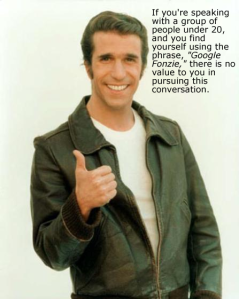I was recently contacted by someone from marketing at a company called
Kudos -
a polite and literate human, not a bot. They asked if I’d blog about
their product. This was new to me. There’s no commission nor would I
seek one. I don’t use their product – I’m a self-employed sole-charge
contractor. I give myself recognition all the time which probably could
be a bit more positive than it is, although some days I think I’m way
too fabulous.
I knew (and know) not very much about the specifics of
Kudos beyond their website and what other
bloggers r
eveal.
So, don’t think for a moment I’m formally recommending them at all, or
commenting on the reliability or functionality of their offering one way
or the other. I’m not because I can’t and I shouldn’t. Plus, as I said,
not only am I a a self-employed sole-charge contractor, I also have a
history of being flippant with a sideline as a professional stand-up
comedian making serious business points using humour as a lever.
So, after that long introductory proviso, I like
the idea of Kudos. That’s all I’m even remotely qualified to comment upon.
I like that here is a possible solution to the problem I’ve
personally encountered with managing operations that are 24/7 and / or
geographically distributed. As I said, I sometimes think I’m pretty
fabulous but no amount of fabulousness makes you omniscient or
ominprescent. You cannot be everywhere at all times. Tons of things are
happening in the workplaces you’re supposed to be leading when you’re,
quite simply, not there. You can’t be. And no matter how charged up you
are about “catching people doing things right” and how committed you are
to ensuring your people get all the positive reinforcement and
corrective feedback they need, you, alone, simply cannot.
I paraphrase Tom Peters (I think) a lot when I say the true test of
your communication / leadership / whatever is what happens when you’re
not around. A challenge I often throw at people I train is how can you
be more influential over what happens when you’re not around. The idea
of
Kudos seems to be a great tool for helping here.
In your absence, employees can give each other feedback online and
you can be kept in the loop. If it works and if some tricky bits can be
handled well, then this has the potential to be very helpful. If you’ve
ever sent an email that someone else has misinterpreted, then you’ll
know what I imply by “tricky bits.” And, in the same way as email in
some workplaces has laughingly replaced face-to-face communication lies a
potential pitfall. There’s no substitute for feedback that is BEST:
B -behaviour based
E -esteem building
S -specific
T – timely
Target behaviours when recognising employees
Sure Kudos would be great if it can create a formal record and trail.
It would be excellent if it helps bring together teams spread over time
and space. But it would need to be implemented carefully with
accompanying training and moderation.
Carol Dweck’s research on mindset
showed the dangers of how just gushing with praise for the wrong
behaviours can be counter productive. (Kids praised for “being smart”
avoided challenge later on whereas kids praised for “working hard”
sought challenges.) I think that any automating of feedback needs to
cater for this pitfall.
The ratio of positive to negative statements in employee recognition
Psychologist
Marcial Losada’s
1999 study looked at communication in teams, particularly the ratio of
positive to negative statements. Various teams were tagged as being
high, medium or low performing teams based on profitability, customer
satisfaction and evaluations from management. The lowest high performing
teams has a ratio of positive to negative statements of 2.9013:1. (For
us non-academics, let’s round that to 3:1.) The highest performing teams
averaged around 6:1. But there were diminishing returns and eventually a
negative effect. Some of the worst performing teams had an 11:1 ratio
so everyone must have been so busy hugging and bestowing warm fuzzies on
everyone else, that no one ever did any actual productive work. That
level of positivity is over-the-top, unrealistic and evidently not
productive.
Kudos would need to factor this in too.
Another opportunity for automated recognition systems to be corrupted
would be familiar to you if you have teenagers on FaceBook, Tumblr etc.
Often you’ll see ‘like for a like’ requests. (Actually, you see that a
lot with grown-ups’ LinkedIn recommendations.) They may indeed be
genuine reflections of actual positive experiences or they could simply
be recognition as a tradeable commodity. Again,
Kudos would have to tackle a praise ‘black market.’ (But who am I to criticise? I’m not even sure I spelled “tradeable” correctly.)
There could be, I suppose, an application for Kudos in my current
working environment where I frequently subcontract to a few training
providers. I don’t have colleagues or bosses in the traditional sense.
They generally employ a contractor model but we contractors too have our
our needs for recognition (prick us, do we not bleed?) and we are even
more problematically spaced out over time and geography. There’s
definitely potential usefulness for
Kudos or similar in that structure.
I’m not meaning to be negative. I do like
the idea
of Kudos. I also like the idea of cars and there are road rules and
safety systems in place for those. Give it a try. There’s a free offer.
Check out that new software smell. Don’t knock it until you’ve tried it,
that’s what I say (despite my stance against meta-amphetamine…)
I’ll keep looking at it. Let me know your thoughts if you’ve had direct experience.












